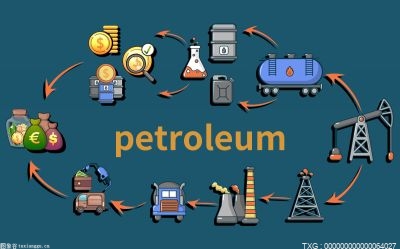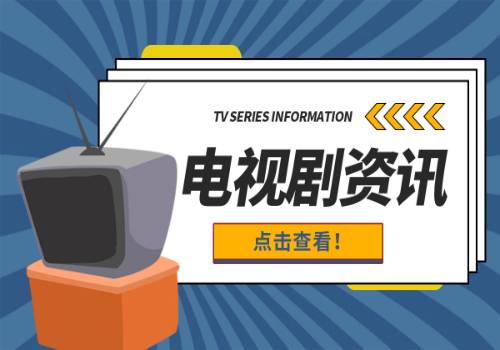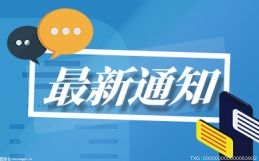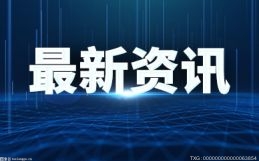China's import and export were basically flat in the first eight months of this year

You may also be interested in:
-
The adverse factors are weakening China's foreign trade import and export in August -
China's import and export were basically flat in the first eight months of this year -
China's total import and export value in the first eight months was 27.08 trillion yuan -
Build a platform to promote projects and let private capital "dare to invest, will invest..." -
In August, the decline of foreign trade narrowed and new growth points were cultivated in the adverse situation -
Foreign trade picked up in August! Export still faces challenges, stabilize foreign trade policy -
Former member of the Judicial Committee of the Supreme People's Court, civil trial -
Ministry of Commerce: will be in Beijing Wangfujing and other 10 major national
Today's Hot Spots
Recommended for you
The Ningxia Forestry and Grass Bureau can fully realize the whole network office
more
-
Reed Foreign Exchange Anhui Hefei Office Wealth Salon Brings Wealth Light to Investors -
Fuchuang University: Chen Tianwei shares financial knowledge with you, and Shiyan training ends perfectly -
Reed Forex Jiashan Wealth Sharing will move towards the goal of wealth! -
Fuchuang University held an economic situation analysis meeting, and Chen Tianwei decrypted the golden period of foreign exchange -
Explore the mystery of wealth investment, here comes the Wealth Salon of Leader Foreign Exchange Chifeng Office! -
Talk about the future of the industry! All the talents gather in Lide Foreign Exchange Nanning Fortune Salon -
Reed Foreign Exchange: Use the power of finance to illuminate the road to wealth -
How much is the price of a box of Indian Super Xerox, and the price of 10 pieces of Super Xerox in 2023 has been updated
more
-
Four state-owned commercial banks clarify relevant rules -
China's import and export were basically flat in the first eight months of this year -
China's total import and export value in the first eight months was 27.08 trillion yuan -
New tax incentives of 1.05 trillion yuan in July before enterprise rescue -
Build a platform to promote projects and let private capital "dare to invest, will invest, and can invest" -
The Financial Stability Law has been submitted for consideration -
In August, the decline of foreign trade narrowed and new growth points were cultivated in the adverse situation -
Foreign trade picked up in August! Export still faces challenges, and the policy of stabilizing foreign trade will increase
Ranking
-
Make a big article around the new consumption of "life optimization solution" -
Know everything every day! Improve the market financing willingness of enterprises -
Cross border spread income swap opens up domestic and overseas risk management channels -
Global SMS! The upsurge of consumption makes a good start for China's economic recovery -
Ning Jizhe: The expected target of GDP growth of about 5% this year is positive and stable -
Small and medium-sized banks have reformed insurance, and the CBRC has said so -
Hot: Spring Festival big data to see China's economic trend in 2023 -
Current focus: In January, the actual amount of foreign investment used nationwide was 127.69 billion yuan in central and western regions -
Global Today News January's "surge" of credit became the prelude to economic recovery -
Improve risk classification system and effectively prevent and control credit risk
Wonderful push
-
The adverse factors are weakening. In August, China's foreign trade imports and exports showed signs of improvement -
China's import and export were basically flat in the first eight months of this year -
Four state-owned commercial banks clarify relevant rules -
China's import and export were basically flat in the first eight months of this year -
China's total import and export value in the first eight months was 27.08 trillion yuan -
New tax incentives of 1.05 trillion yuan in July before enterprise rescue -
Build a platform to promote projects and let private capital "dare to invest, will invest, and can invest" -
The Financial Stability Law has been submitted for consideration -
In August, the decline of foreign trade narrowed and new growth points were cultivated in the adverse situation -
China's total import and export value in the first eight months was 27.08 trillion yuan -
Build a platform to promote projects and let private capital "dare to invest, will invest, and can invest" -
In August, the decline of foreign trade narrowed and new growth points were cultivated in the adverse situation -
Foreign trade picked up in August! Export still faces challenges, and the policy of stabilizing foreign trade will increase -
Foreign trade picked up in August! Export still faces challenges, and the policy of stabilizing foreign trade will increase -
Zheng Xuelin, former member of the Judicial Committee of the Supreme People's Court and former chief judge of the First Civil Adjudication Tribunal -
Triple growth in 10 years! The installed capacity of renewable energy in China has exceeded 1.3 billion kilowatts -
The European smartphone market is in a downturn: shipments in the second quarter of 2023 hit a new level in 11 years -
Angobo, President of Merck China: show that integration with AI will greatly promote human progress [attach -
Zheng Xuelin, former member of the Judicial Committee of the Supreme People's Court and former chief judge of the First Civil Adjudication Tribunal -
Zheng Xuelin, former member of the Judicial Committee of the Supreme People's Court and former chief judge of the First Civil Trial Tribunal, was investigated -
Ministry of Commerce: Special theme activities will be held in 10 major business districts in China, including Wangfujing in Beijing -
Ministry of Commerce: The international "circle of friends" of China's digital economy continues to expand -
Still like strolling? Watsons was fined 80000 yuan for false advertising [Analysis of cosmetics retail industry with beauty] -
The rise of Chinese enterprises! Yan Ruoyuan, co president of Vicino: China's enterprises' OLED market share -
Ministry of Commerce: Special theme activities will be held in 10 major business districts in China, including Wangfujing in Beijing -
Digital trade, trade in goods and trade in services have become the three pillars of trade power -
40 seconds a car! The 200000th complete vehicle of Tesla Shanghai Super Factory went off the production line [attach Shanghai -
13 Departments Jointly Announce the Third Batch of National Cities' Pilot List of Fifteen Hour Convenient Living Circles -
Prospective IPO headline: The "Little Giant" of bearings opens its subscription! Honeycomb Energy has applied for IPO of Science and Technology Innovation Board -
Digital trade, trade in goods and trade in services have become the three pillars of trade power -
The strongest growth driver in the world! Next year, Huawei will ship more than 60 million mobile phones -
Heavyweight! For the first time, Brazilian pulp enterprises used RMB as the trade settlement currency for their exports to China -
China Mobile will stop selling the new iPhone 15? Note that this is a fake message -
The output value soared to 700 billion! China's nuclear technology application ushers in a major breakthrough [application of nuclear technology attached -
Super fast charging covers 100 cities! It is estimated that 5000 ultra fast charging stations will be built in Xiaopeng in 2027 -
He Yadong, the new spokesman of the Ministry of Commerce, appeared -
He Yadong, the new spokesman of the Ministry of Commerce, appeared -
Zifang Capital strategically invests in overseas ORANGEBIZ enterprises! Accelerate the building of an industry finance integration platform -
2023 Member Day | Come to Hanji, Ningbo to find the happiness of customization -
Huishan milk powder's baby powder products won the ITI International Taste Award -
Hehong Service's interim financial report in 2023: adhere to the main line of high-quality development, multiple core data -
Wait for 6 years! Tesla launched a new model 3259900 for sale [with new energy vehicles -
Over 100 million yuan a day! Jewelry Live Broadcasting Becomes the King of Goods [with market analysis of jewelry live broadcasting industry] -
For the second time this year! The fundamental reason why 11 banks cut deposit interest rates is that [Attached with historical deposit -
Beijing further standardizes property management fees -
"Minxing" sings in Xuhui, and dreams are wonderful -
China Wins Angola -
The Chinese Academy of Sciences and the Chinese Academy of Sciences announced the list of effective candidates for the 2023 academician co election. Several Shenzhen scientists were selected -
The Chinese Academy of Sciences and the Chinese Academy of Sciences announced the list of effective candidates for the 2023 academician co election. Several Shenzhen scientists were selected -
Reduce burdens and increase vitality, stimulate foreign trade enterprises with practical policies -
Increase support for SMEs -
Inzaghi Jr.: Last year, just one step away from his dream, he still hopes to become the protagonist on the stage of the Champions League -
Increase support for SMEs -
Continue to expand domestic demand and consolidate the foundation for the recovery and development of manufacturing industry -
State Administration of Financial Supervision: Credit resources are given a certain preference to private enterprises -
State Administration of Financial Supervision: Credit resources are given a certain preference to private enterprises -
Miracle Dancing Steps of Balala Small Devil Fairy Episode 26 (How can I watch Balala Small Devil Fairy -
(Economic) New regulations on the registration of enterprise names to prevent counterfeiting of state-owned enterprises, central enterprises and other illegal acts -
Ministry of Commerce: RCEP is an open and inclusive free trade agreement. The door is open to India -
Beijing Stock Exchange and National Stock Exchange launched the "three services" Guangdong travel activity to implement the "system of..." -
Ministry of Commerce: RCEP is an open and inclusive free trade agreement. The door is open to India -
Qiming Medical - B (02500. HK) medium-term income of 256 million yuan increased by 21.7% year on year -
(Economic) New regulations on the registration of enterprise names to prevent counterfeiting of state-owned enterprises, central enterprises and other illegal acts -
Ministry of Commerce: Maintain a Free and Open International Trade Order -
Suspense rises again! Who is the largest province of Chinese medicine? -
Ministry of Commerce: Maintain a Free and Open International Trade Order -
7 in Changsha are on the list! The first batch of Hunan modern service industry innovation and development zones were announced -
Major breakthrough! Monoclonal antibodies successfully prevent organ rejection after transplantation -
A car in three seconds! In 2023, Toyota's automobile output may exceed 10 million vehicles for the first time [attach China -
What signal does the two strongest cities release when they suddenly take a heavy position in agriculture? -
The annual interest rate of one-year deposit dropped to 1.58%! The Postal Savings Bank cut the fixed deposit rate today [attached -
"China Disney" soared by 190%! Haichang Ocean Park earned 750 million yuan in the first half of the year -
Prospective IPO headline: Youbao Online's third IPO! Artest can respond to the termination of listing -
Ministry of Commerce: Special policies and measures will be introduced to promote import and export, promote stability and improve quality -
First win of China Men's Basketball World Cup! 8 balls and 20 points to break the NBA interior! Qiao Shuai cheated everyone -
Ministry of Commerce: Special policies and measures will be introduced to promote import and export, promote stability and improve quality -
What are the manifestations and symptoms of adult calcium deficiency, and how to scientifically supplement calcium -
For the first time in history, it surpassed the United States! China becomes the world's largest iPhone market [with smart phones -
Keep falling! The number of newborn babies in South Korea dropped to an all-time low: only 249000 in 2022 -
Just now! Increase 1000 yuan respectively! Adjustment of special additional deduction standard of three individual income taxes -
Two departments: "one old and one young" deduction policy is conducive to further reducing family support -
Car chips are growing against the trend! In the first half of the year, the main business income of SMIC Integration grew by more than 60% [attach -
Another descent? Up to 25bps! Since September 1, several banks have lowered the deposit interest rate [ -
Up to 50000 yuan per child! After Ctrip, where will you give birth subsidy gift money -
Three departments: implement the corporate health function claim and the main responsibility of R&D evaluation -
Just now! Increase 1000 yuan respectively! Adjustment of special additional deduction standard of three individual income taxes -
Xingyi, Guizhou: Pink and Daisy Flower Sea Drunk Tourists -
Three departments: implement the corporate health function claim and the main responsibility of R&D evaluation -
The spokesman of the Ministry of Defense talks about the military relations between China and the United States: dialogue cannot be without a bottom line -
The spokesman of the Ministry of Defense talks about the military relations between China and the United States: dialogue cannot be without a bottom line -
Where is the Code of Small Flowers -
"Magic" comes into reality! Wearable devices realize "navigation with a little wrist" [attach -
Only $28 million last year, OpenAI is expected to achieve an annual revenue of $1 billion in the future -
The Ministry of Industry and Information Technology publicized the first batch of pilot cities for digital transformation of SMEs -
Dang Xiaohong, Deputy Director of the State Port Management Office: further expand the function of "single window" -
Broken arm transformation? Ford will cut three popular gasoline vehicles to make way for electric vehicles -
Breaking the 100 billion mark for the first time! Midea Group's total revenue in the second quarter was 101.2 billion yuan, creating a single quarterly calendar -
It covers 30.7 square kilometers! Why did Yunnan kill the whole city for 18 consecutive days? [Cancellation attached -
(Xinhua full media+) The list of effective candidates for additional election of academicians of the Chinese Academy of Sciences and the Chinese Academy of Sciences in 2023 will be announced -
(Xinhua full media+) The list of effective candidates for additional election of academicians of the Chinese Academy of Sciences and the Chinese Academy of Sciences in 2023 will be announced
this Daily news
-
How many methods are most commonly used to pickle salted duck eggs? The best way to pickle old wall mud? -
Which are the top ten marketing universities in China? Is the Central University of Finance and Economics on the list? -
What are the leading aerospace concept stocks? What is the revenue of Aeroengine in 2021? -
What are the leaders of the big consumption concept stocks in 2022? What is the revenue of Yanghe Shares in 2021? -
What are the leading stocks of water conservancy projects? What are the stock prices of water conservancy projects? -
What are the leading stocks of rare earth stocks? How can we buy Guangsheng Nonferrous? -
What are rare metals in resource stocks? What are the leading stocks? -
What does CP mean? Group CP implies hope for two people together? -
What is a vertical farm? What are the functions of vertical farms? -
Is it unnecessary for individual candidates to take the college entrance examination? Can I change my major after single admission?







